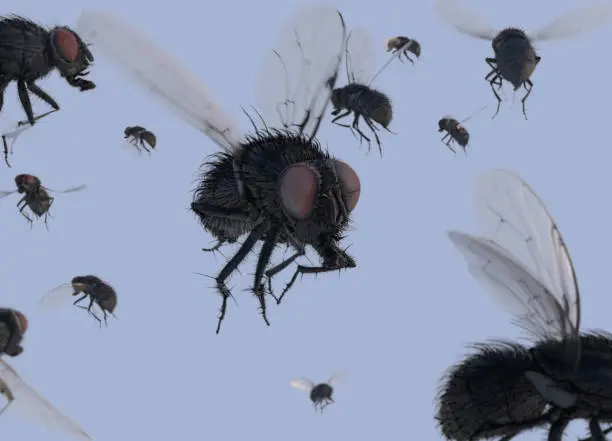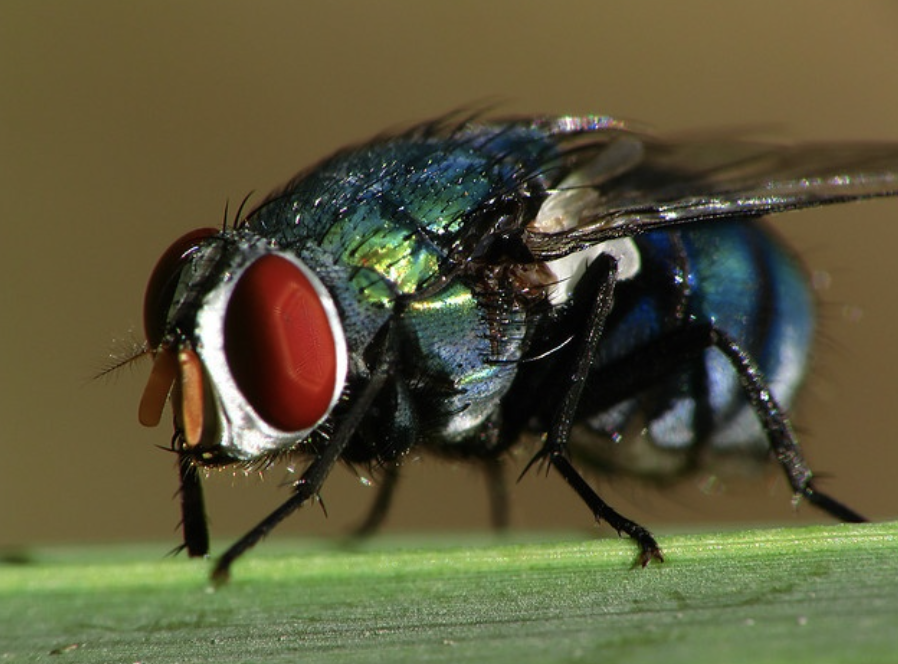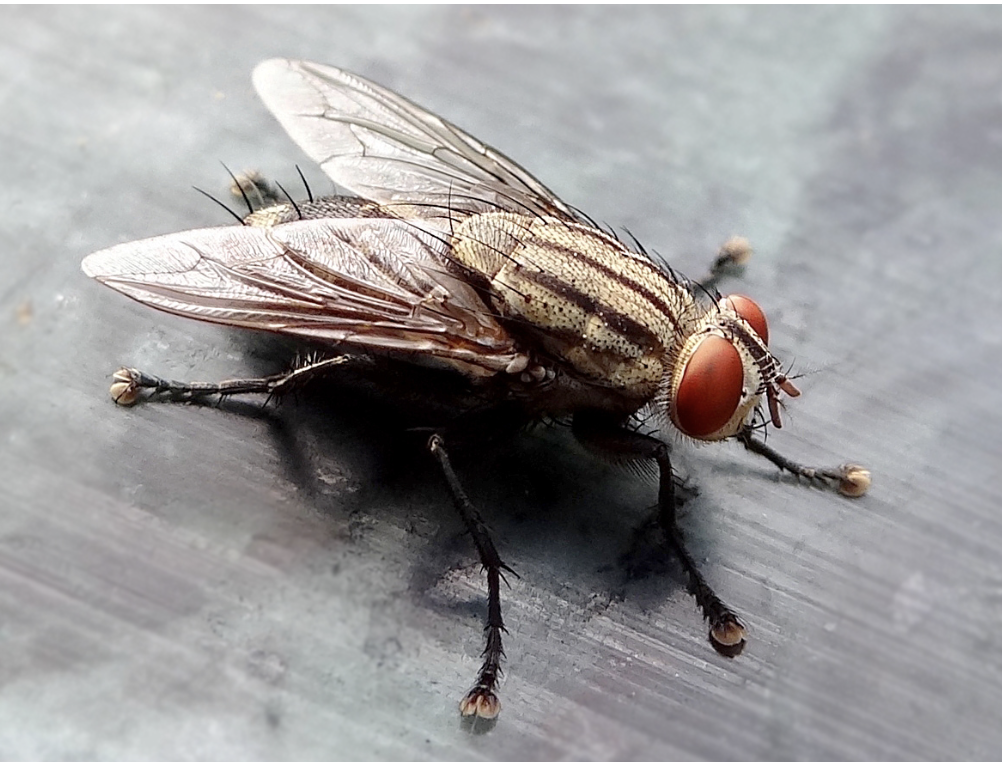
The Blue Bottle Fly & the Common House Fly
Everyone is familiar with flies. The pesky rascals seem to invade our lives at the most inopportune time (for us anyway.) Today, we will look at two of the more common flies: the Blue Bottle Fly and the Common House Fly. They are both pretty nasty, but they do help with things like pollination, and the larvae (maggots) help with the decomposition of dead animals and rotting organic matter, and in this way, help facilitate nutrient cycling. Let’s watch this video first, and then we can learn about the differences between the two.
Blue Bottle Fly (Calliphora vomitoria)

Description:
- Appearance: Blue bottle flies are easily recognized by their metallic blue bodies, red eyes, and clear wings. They are relatively large flies, measuring about 10-14 mm in length.
- Lifecycle: The life cycle of a blue bottle fly consists of four stages: egg, larva (maggot), pupa, and adult. Females lay eggs on decaying meat, carrion, or feces, which hatch into larvae that feed on the organic matter. Adults may live from 2 to 4 weeks.
- Habitat: These flies are commonly found around garbage, decaying organic material, and animal remains. They are widespread and can be found in urban, suburban, and rural environments.
- Feeding: Adult blue bottle flies feed on nectar and other sugary substances but are also attracted to decaying matter where they lay their eggs.
- Role in Decomposition: Blue bottle flies play a crucial role in decomposing by breaking down dead animal tissue. Their larvae are scavengers that help recycle nutrients back into the ecosystem.
- Pollination: While not as effective as bees, blue bottle flies can contribute to pollination by visiting flowers to feed on nectar.
- Health Concerns: These flies can be disease vectors, transferring bacteria from decaying matter to human food sources, leading to foodborne illnesses.
Common House Fly (Musca domestica)

Description:
- Body Color: Gray with four dark longitudinal stripes on the thorax.
- Size: Smaller, about 6-7 mm in length.
- Eyes: Red eyes, often slightly closer together than those of blue bottle flies.
- Preferred Habitat: Commonly found in and around human dwellings, farms, and places with accessible food waste.
- Lifecycle: Females lay eggs on decaying organic matter, manure, or garbage. The larvae (maggots) feed on this material.
- Role in Nature: Can also aid in decomposition but are more often associated with human habitats and can be a nuisance.
- Total Lifespan: Typically about 15 to 30 days under natural conditions.
What do flies do in the winter to survive?
1. Diapause
- Definition: Diapause is a period of suspended development and reduced metabolic activity that some insects, including flies, enter to survive adverse conditions.
- Mechanism: Flies may enter diapause in the pupal stage. During this time, their development is paused, allowing them to survive until favorable conditions return in the spring.
- Triggers: Diapause is typically triggered by environmental cues such as shorter daylight hours and cooler temperatures.
2. Seeking Shelter
- Indoor Habitats: House flies and other species often seek shelter in warmer environments, such as human homes, barns, and other buildings. These locations provide protection from freezing temperatures.
- Natural Shelters: Flies may also find shelter in natural crevices, under bark, in leaf litter, or other protected outdoor locations where temperatures are more stable.
3. Overwintering as Larvae or Pupae
- Larvae and Pupae: Many flies overwinter as larvae or pupae in protected environments. For example, larvae may burrow into the soil or other organic material to avoid the cold.
- Survival Tactics: These immature stages can be more resistant to cold than adults, allowing them to survive until conditions improve.
4. Overwintering as Adults
- Adult Flies: Some adult flies can survive the winter by entering a state of dormancy in protected locations. They reduce their metabolic rate to conserve energy.
- Reactivation: When temperatures rise in the spring, these adult flies become active again, seeking food and mating opportunities.
5. Mortality
- Natural Death: Despite these strategies, many flies do not survive the winter due to extreme cold, lack of food, or predation. This natural mortality is part of the population dynamics of flies.
Understanding these survival strategies helps explain why fly populations fluctuate seasonally and why some flies are still seen indoors during the colder months. But I say, “Good riddance.”

Welcome to 3-Minutes A Day University, where you can learn a little about a lot of things every day in three minutes or less. We help you expand your knowledge and understanding of the real world, and 3-MAD University is tuition-free. Our wide-ranging syllabus includes a fascinating insight into topics including Health and Medicine, Science, Sports, Geography, History, Culinary Arts, Finance and the Economy, Music and Entertainment, and dozens more. You will impress yourself, your friends, and your family with how easy it is to learn facts and perspectives about the world around you. One topic you will never find covered is politics. We hope you enjoyed the previous three minutes. If you liked this post, please pass it along to a friend.
Was this email forwarded to you? Subscribe Here.
© Copyright 2024. 3-Minutes A Day University All Rights Reserved. Unsubscribe

